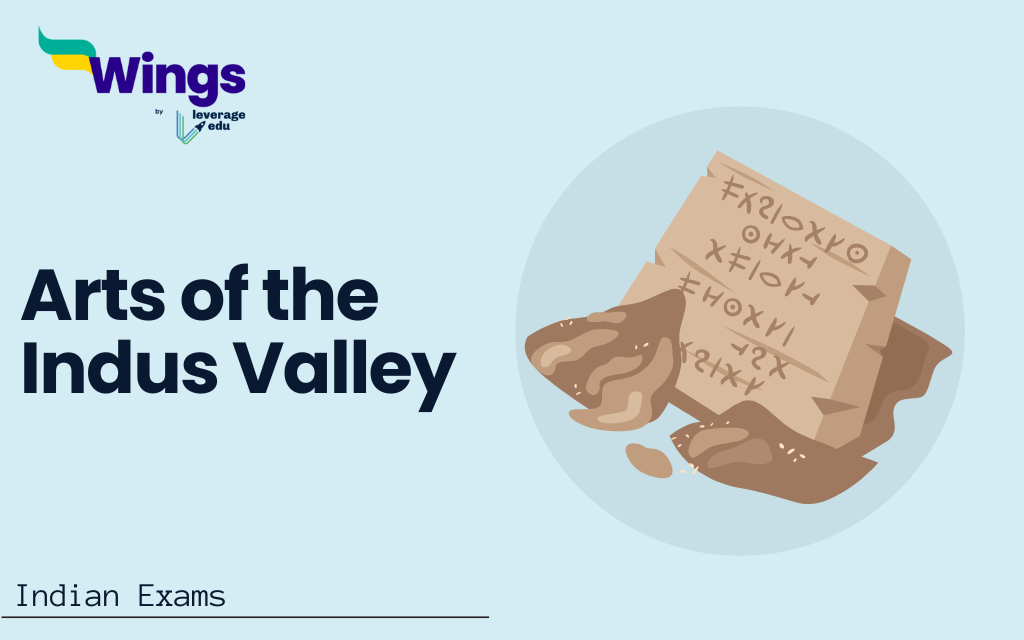The Indus Valley or Harappan civilisation, stands as South Asia’s earliest urban civilisation, contemporaneous with Mesopotamia and Egypt. Occupying an expansive territory of approximately 800,000 square kilometres, it was known for its advanced urban planning, sophisticated drainage systems, and standardised brick construction.Despite its achievements, the civilisation’s decline around 1900 BCE remains unknown, possibly due to environmental changes, economic factors, or external pressures.
Contents
About Arts of the Indus Valley
The Indus Valley artists were skilled at creating lifelike figures of people and animals, including accurate anatomical detail.They were particularly adept at crafting detailed figurines, especially of animals, using terracotta (baked clay).Their buildings were designed for function rather than fancy decoration.The Indus Valley’s architectural style developed from the building traditions of earlier farming and herding communities.
Indus Valley: Architecture
The town planning system of the Harappan culture was characterised by its grid-based layout, with streets and alleys intersecting nearly at right angles to create multiple rectangular blocks that made up the city.
City Planning:
- Grid System: Streets formed neat squares with houses and buildings in blocks.
- Citadel: Fortified area, possibly for priests or upper class, with important buildings.
- Lower Town: Where most people lived, with houses and workshops.
Building Materials:
- Burnt Bricks: Used for streets and some buildings.
Advanced Systems:
- Drainage: Houses connected to well-built drains under streets.
Burial Practices:
- Pit burials: People buried in simple pits.
- Grave goods: Some burials contained pottery, ornaments, and jewellery, suggesting belief in an afterlife.
Indus Valley :Arts and Artifacts
This table outlines the major art forms of the Indus Valley Civilisation, highlighting key examples and motifs associated with each category.
| Art Form | Description | Key Examples and Motifs |
| Sculpture | –Stone statues: Three-dimensional stone sculptures, including torsos and busts. –Bronze Casting: Utilised the lost wax technique for bronze statues depicting humans and animals. –Terracotta figures: Representations of human forms. | – Torso in red sandstone — Bust of a bearded man in steatite –Dancing Girl (bronze) — Terracotta mother goddess |
| Seals | –Thousands discovered made of materials like steatite, agate, chert, copper, gold, ivory, and terracotta. –Each engraved with a yet undeciphered pictographic script. | — Pashupati Seal with animal motifs (elephant, tiger, etc.) |
| Pottery | –Wheel-made wares, predominantly plain with red clay. –Rare instances of polychrome and incised pottery. Perforated pottery used for straining liquids. | –Plain pottery with red clay –Perforated pottery |
| Ornaments | –Extensive use of gold, copper, and various gemstones like cornelian, amethyst, and lapis lazuli. –Items included necklaces, armlets, earrings, etc. | –Beads industry at Chanhudaro and Lothal |
| Literature (Script) | Undeciphered script consisting of 400-600 signs, written Boustrophedon style (right to left alternating). | –Boustrophedon script style |
Arts of the Indus Valley: Importance
Here in this section we have stated the importance of arts of the Indus Valley in detail:
- Harappan civilization was an early urban civilization that laid the groundwork for future societies in India.
- Their art suggests a culture that valued cooperation despite challenges, with little sign of war or extreme wealth gaps.
- Harappans were skilled at city planning, drainage, and water management, inspiring modern urban design.
- Homes with private bathrooms and well-developed drainage systems show their emphasis on hygiene.
- Their art suggests a society focused on social ties rather than religious divisions.
- The Harappan civilization started long-distance trade, leading the way for future globalization.
Arts of the Indus Valley: PYQs
These questions reflect various aspects of the Indus Valley Civilization including its cultural, religious, and technological characteristics, as well as its influence on contemporary urban planning and cultural continuity.
| Question | Year | Type | Answer |
| Regarding the Indus Valley Civilization, consider the following statements: 1. It was predominantly a secular civilisation and the religious element, though present, did not dominate the scene. 2. During this period, cotton was used for manufacturing textiles in India. Which of the statements given above is/are correct? | Prelims, 2011 | MCQ | (b) 2 only |
| Which of the following characterise/characterises the people of Indus Civilization? 1. They possessed great palaces and temples. 2. They worshipped both male and female deities. 3. They employed horse-drawn chariots in warfare. Select the correct statement/statements using the codes given below. | Prelims, 2013 | MCQ | (b) 2 only |
| To what extent has the urban planning and culture of the Indus Valley Civilization provided inputs to present-day urbanisation? Discuss. | Mains, 2014 | Descriptive | Answer would focus on urban planning, drainage systems, and possibly continuity of cultural practices influencing present-day urbanisation. |
| The ancient civilisation in the Indian sub-continent differed from those of Egypt, Mesopotamia, and Greece in that its culture and traditions have been preserved without breakdown to the present day. Comment. | Mains, 2015 | Descriptive | Answer would discuss the continuity of certain cultural elements such as language, religious practices, and societal structures from the Indus Valley Civilization to modern times. |
FAQs
Pottery, sculpture (especially seals), jewellery, and urban planning exemplify their artistic achievements.
Characterised by intricate seal carvings, pottery with distinctive motifs, and small sculptures of animals and humans.
Known for advanced urban planning, standardised weights, a writing system yet to be fully deciphered, and trade networks.
Utilised a script that remains undeciphered, seen primarily on seals and artefacts, possibly serving administrative and ritual purposes.
This was all about the “Arts of the Indus Valley”. For more such informative blogs, check out our UPSC Exams Section, or you can learn more about us by visiting our Indian exams page.
 One app for all your study abroad needs
One app for all your study abroad needs














